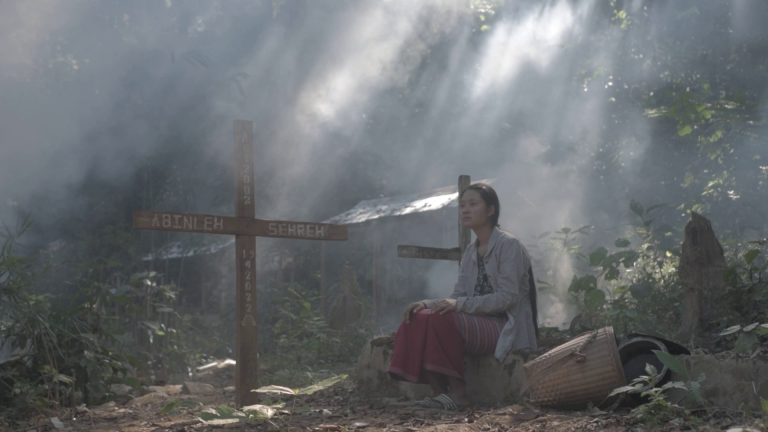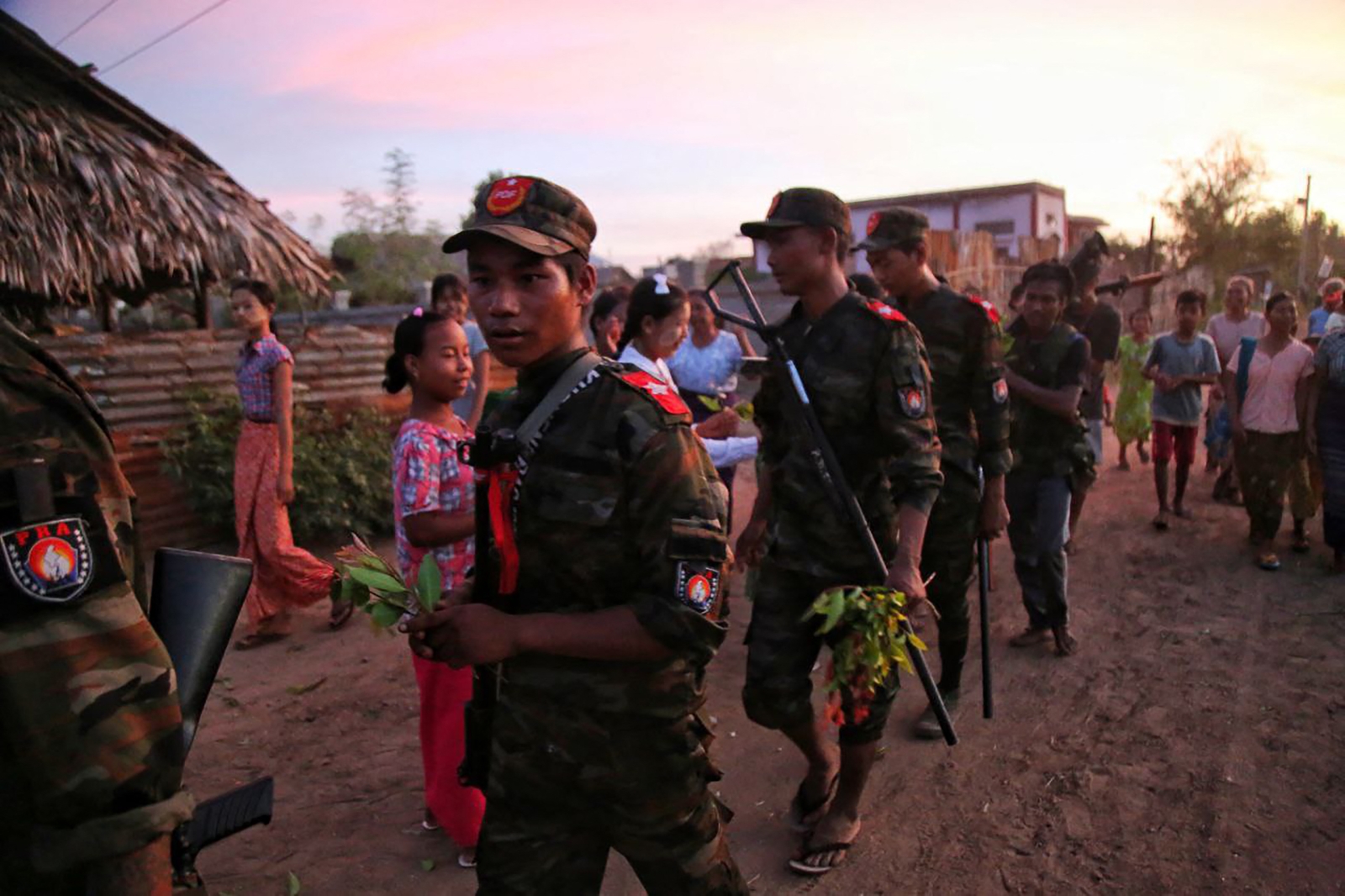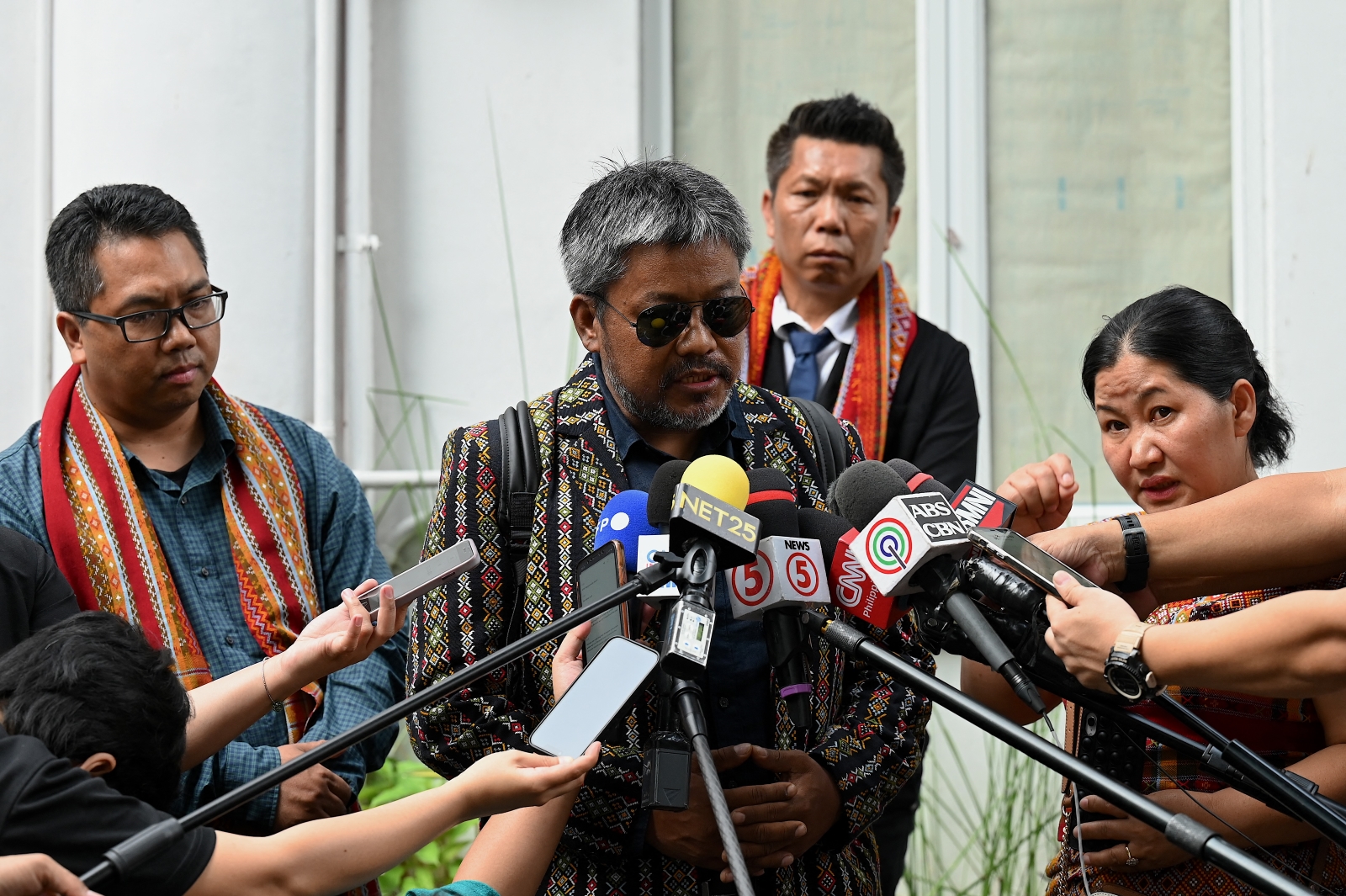Visitors to Chin State can expect stories of giants and three-legged pixies, but as the modern world gains ground in the mountainous state, this folkloric tradition is under threat.
By NICOLA EDWARDS, CIN KHAN LIAN and ASHLEY SOUTH | FRONTIER
The Chin hills are a world apart from the rest of Myanmar. An airport is due to open next year near Falam, but for now Chin is the only state in the Union without direct air access. Until then, one of the easiest ways to get there is by road via Kalay, a Sagaing Region town at the foot of the hills. The town has a cosmopolitan mix of ethnicities, including many of the groups, speaking distinct but related languages, that together form the Chin people. Kalay’s residents include some prosperous Chin upland families who have settled in and around the town because it has better services and amenities than in Chin.
A few kilometres outside Kalay, the road rises steeply as it crosses the border with Chin State – the poorest state or region in Myanmar, according to the World Bank-supported Poverty Report released in June, which said nearly six out of 10 people in Chin subsist on less than K1,590 (US$1.06) a day. Chin also has the lowest matriculation exam pass rate – just under 20 percent this year – and some of Myanmar’s highest infant and maternal mortality rates.
Despite the difficulties of daily life in the state, the Chin hills are beautiful – at least on the days they are visible. On a trip in October and November, my travel companions and I enjoyed about two weeks of sunshine, clear skies and glorious views of range after range of rolling green hills, some of them lightly forested, with small villages perched on the slopes. Many peaks, such as Mt Kennedy in northern Chin, at 2,703 metres the second highest peak in the state after Mt Victoria (3,053m), were draped in wispy clouds.
Even on sunny days, it is not too hot at this time of year. Our journey took us through towns and villages at elevations of between about 600m and 1,524m, where the bright sunshine and crisp clear air was a welcome change from the humid heat of Myanmar’s lowland plains.
Support more independent journalism like this. Sign up to be a Frontier member.
It’s a different story when the clouds close in. For the last week of our trip, visibility was limited by cold, thick, wet fog. It was difficult to remember the stunning views when it was barely possible to see across the street.
A networked society
About half of the Chin live outside the state, including many thousands who have gone abroad as migrant workers or refugees. Christian-majority Chin is, on one level, one of the most homogeneous states or regions in Myanmar; it is the only one without any ethnic affairs ministers to represent non-Chin residents. However, Chin society is defined by its own diversity. Estimates and opinions vary, but there are about five main language groups and between 35 and 78 ethno-linguistic sub-groups. All of these groups proudly identify as unique communities with their own language and culture.
Too much diversity can create challenges, however, as community leaders search for longed-for unity. Some are advocating that education provision and government administration be divided according to the five main language groups. Others are promoting and developing a single Chin language that combines elements of existing dialects. Such efforts can create tensions, especially in communities where larger Chin groups tend to dominate smaller, potentially marginalised groups.
The rich variety of Chin languages and cultures is matched by a great diversity of attractive handicrafts, including gorgeous textiles, and a treasure trove of traditional stories. The handicraft tradition is one example of what the late British political anthropologist and historian Anthony Smith called “ethnie” – that is, a common cultural or linguistic theme that cuts across different sub-groups and constitutes the Chin cultural core.
For the Chin, linguistic diversity, the variety of folktales and other cultural elements constitute the building blocks of a diverse “networked” society. Rather than having a single homogenous core, a networked society is characterised and bolstered by the diversity of its elements.
In search of giants
We heard many fascinating tales during our trip. They included stories about magical creatures in paddy fields that protect crops, and forest-dwelling fire creatures that sometimes approach the edges of villages and illuminate treetops and the sky with mysterious lights.
Many Chin recounted stories from recent living memory about Phei Sam, a three-legged pixie who lives in corn fields and when captured, it is believed, brings wealth and improved harvests but can wreak havoc if mistreated.
There are also tales of ghosts who like to jump into cars or onto the pillion seats of motorbikes and are found along the routes where Japanese and Allied troops fought during World War Two. Some Chin also believe that women ghosts clad in white sit during misty weather on roadside precipices, trying to lure travellers to their deaths. Others say there are locations haunted by giants, which make loud breathing and sleeping noises. We met some people who claimed to have encountered creatures made of or exuding fire and seen their pyrotechnic displays, albeit from a distance.
Perhaps the most fantastic stories were those of the mountain giants. According to some accounts, hunters who had shot a mountain giant found that the felled colossus had transformed into the body of a small animal, such as a frog or mouse, with a bullet hole in the skull.
Sadly, no giants have been seen for more than 20 years, although occasional sightings of fire creatures continue to be reported. The decline in sightings of mythical and magical creatures seems to have coincided with the spread of Christianity; many families explained that their faith prevented them from believing in such beings. Although most Chin are Christian, and the 2014 census found that only 62,079, or 13pc, of people in the state are Buddhist, many are animist, especially in the remote and isolated south. The 2014 census showed 1,830 animists, or 0.4pc of Chin’s population, which is likely to be an under-estimate.
Memories fade
Myanmar’s ethnic nationality Christians have an understandable desire to distinguish themselves from their own animist predecessors, in order to carve out a dignified place for themselves in the modern world. Sadly, this can entail the abandonment of traditional knowledge and folklore, even though these may be better understood as elements of cultural heritage rather than evidence of lingering animist belief.
The challenge of retaining this pre-Christian heritage is urgent. The memory of it is fading as those with memories of pre-conversion times die, taking their stories of fantastic creatures with them, and as more young people embrace the attractions and distractions of modern life.
Our journey through beautiful Chin helped us to better understand the extraordinary diversity and wonderful creativity of the state’s cultural inheritance – and the challenges of respecting and celebrating this diversity as a source of strength in a “networked society”.






